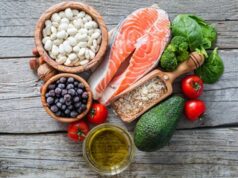NATIONAL REPORT—Are you getting what you paid for from seafood suppliers? If your fish is mislabeled or short-weighted, you could be the victim of seafood fraud. As a result, you could be losing money and/or perpetuating the fraud by inadvertently deceiving your guests.
Seafood fraud can occur anywhere along the supply chain, says Lisa Weddig, Secretary of the Better Seafood Board, which works with restaurants, retailers and manufacturers to report suppliers that commit economic fraud.
The most common issues of seafood fraud are menu mislabeling, species substitution and short weighting. Menu mislabeling occurs when a restaurateur or retailer markets one species as another, such as serving tilapia but describing it as grouper. Similarly, species substitution occurs when a supplier sells a fish under another name, such as labeling a box of various types of snapper as red snapper.
Short-weighting occurs when a supplier adds moisture, water or another additive to make frozen fish appear to weigh more. For example, a supplier might include the weight of the ice glaze with the weight of the fish, Weddig explains.
You Could Be Losing a Lot
Some operators slack out their fish in water, put it in a perforated pan and weigh it. They also count and weigh every piece. If you order 1,000 pounds of seafood a month, and your weight is off by $1 a pound, you could be losing $1,000 a month.
Here are more tips to avoid seafood fraud:
Labeling—Use the FDA seafood list to see the common, acceptable market and Latin names of seafood, Weddig suggests. Consider printing the list and compiling a booklet for staff to consult in each restaurant.
Unsure you’re using the right terminology? The Better Seafood Board will review your menu for red flags, Weddig says.
If you run out of a fish, just say you’re out. Don’t try to substitute, Weddig says.
Purchasing
Find a reputable supplier. If you’re just starting out or looking for a new supplier, call better-known, established restaurants in your area to find out whom they buy from, says Bart Farrell, Food and Beverage Director, Clyde’s Restaurant Group. Then go visit their plants unannounced.
Farrell has been buying the majority of his seafood from the same supplier, Congressional Seafood, for 15 years. Clyde’s and Congressional established a multi-prong quality control plan, which includes strict procedures from cutting to packing to shipping. An employee signs off on each step to ensure quality, and the product undergoes a final check before shipping. That ensures the correct cut, count and weight for each product; otherwise, Clyde’s would send the product back.
Farrell also receives a copy of the seafood supplier’s quarterly Sanitation Inspection Audit and makes announced and unannounced visits. If you find trustworthy and reputable suppliers, they’re unlikely to risk their reputation and pull a fast one on you, he says. Otherwise, they stand to lose a fair amount of business.
Consider working with suppliers who belong to the Better Seafood Board. Members are committed to preventing seafood fraud and providing products that are accurately labeled for identity and weight.
Buy fish with skin on or whole fish when possible. “It’s a good way to avoid surprises,” Farrell says. After a fish is skinned and fileted, it’s difficult to tell a cod from Pollock, especially for someone not trained, Conrad says.
When buying fillets, train employees to properly identify commonly marketed species during receiving, the FDA recommends. “Frozen filets tend to look alike, unless you really know your fish,” Weddig says.
Be skeptical of extra-low prices or incredible deals that are outside the norm. When someone offers you something that sounds too good to be true, something’s “fishy.”
Receiving
Confirm the species sold to you is the same as what was sold to your supplier, the FDA recommends.
Train staff to check the product against labels, invoices and purchase orders, the FDA suggests.
Establish procedures for weighing, taking temperature and notifying the chef of abnormalities with the product or inconsistencies with the label, invoice or purchase order, Farrell advises.
Train employees to double check weights. For example, thaw shrimp before checking the quality and consistency, Farrell recommends. Make sure the slacked weight is the same as the packaged weight. Make sure they understand the procedures to check the weight of frozen seafood, which could influence the final weight, Weddig says.
Familiarize your kitchen team with new offerings, starting with your chefs. When Clyde’s adds a new fish to the menu, the chefs work with it to develop new recipes. Then they spend time with the prep team and cooks so they understand what the new fish should look and taste like, and most importantly, how to cook it properly.
Reporting
Contact the appropriate state, local or federal agency if you have any concerns.
Click here for more information.






